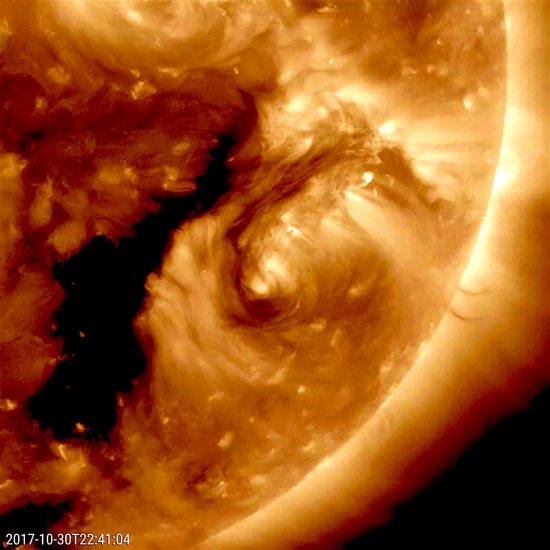Nov 13, 2017
Solar filaments appear dark because they are seen against glowing backdrops.
These articles are intended to show that Electric Universe theory about plasma discharge behavior is a better model for solar activity than consensus ideas. Experiments with a positively charged sphere reveal that a torus forms above its equator. Ionized plasma bridges the torus, coupling the sphere’s middle and lower latitudes, consistent with the principle of “anode tufting”, a plasma discharge effect expected from a positively charged electric Sun.
Electric discharges in plasma create tube-like magnetic sheaths. If there is sufficient electric charge, the sheaths will glow, sometimes creating other sheaths. The sheaths are called “double layers.” Powerful electric fields appear between regions in the double layers, which accelerate charged particles. Sometimes, the stored electrical energy will be catastrophically released in a “Langmuir burst”.
According to a recent press release, the Solar Dynamics Observatory detected a “dark filament encircling an active region”. Although the announcement mentions that the filament is comprised of charged particles, the observation “may have no major scientific value”.
Sunspot filaments are rapidly rotating charge vortices. Since electric discharges in plasma form rope-like tendrils, looking down into a sunspot reveals its discharge column in profile. Since they are funnels of plasma, sunspot centers are darker, where convection cells would appear darker at their edges.
The movement of electric charge in plasmas forms electric fields that constrict the current. As previous Pictures of the Day point out, the constricted channel is known as a “Bennett pinch”, or “z-pinch”. The pinched electric filaments remain coherent over long distances, forming helical structures that can transmit power through space. It is that phenomenon that scientists refer to as flux ropes. They are also known as Birkeland currents. Electric fields freely accelerate charged particles, which move outward in opposite directions, activating an electric current that follows the Sun’s magnetic field.
Most heliophysicists see the Sun as a giant amplifier, accelerating solar plasmas into space in the same way that sound waves travel through “acoustical wave-guides”. As previously written, it is spicules, rising thousands of kilometers above the photosphere, that carry ionized plasma with them. Since the Sun is the locus of positive charge with respect to interstellar plasma, sunspots appear when electric discharges penetrate the photosphere, allowing electric charge to flow into its depths. Electromagnetic flux tubes (sunspot filaments) expose the Sun’s cooler interior.
Stephen Smith













